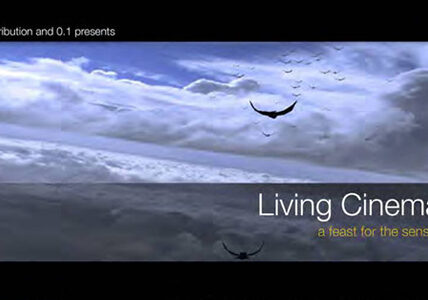The old adage that lightning never strikes twice clearly does not hold true when it comes to the world of moviemaking. Only recently, horror sequel Insidious: Chapter 2 (above) has stunned box-office watchers with its record-breaking September US opening of $41m, making it the second highest opening horror film of the year behind director James Wan’s own The Conjuring. It’s of note that both pictures were not only from the same filmmaker but also the same production shingle, Blumhouse Productions, and that both were produced for a tiny budget of about $5m apiece. As our US cousins are prone to say, ‘you do the math’. (Indeed, as we went to press, it was announced that there is an Insidious 3 already in the works.)
It is now standard accepted practice to milk the value from a successful movie and thus create a valuable franchise in the process. In both 2011 and 2012, the highest grossing seven films were all sequels. And this year alone has seen further iterations of: Die Hard; G.I. Joe; The Hangover; RED; Kick-Ass; Despicable Me; The Fast and the Furious; Monsters, Inc.; Grown Ups; Pitch Black; and Star Trek, to name but a few. Indeed, there continues to be a seemingly never-ending conveyor belt of re-hashed film fodder: upcoming releases we can look forward to include new outings for—deep breath—Thor; James Bond; The Avengers; Star Wars; Finding Nemo; X-Men; The Conjuring; Spider-Man; Jurassic Park; Avatar; Mission: Impossible; Superman (now with added Batman); Captain America; Planet of the Apes;and many others. And the UK industry is far from immune from sequel-itis, with new chapters for The Woman in Black, The Sweeney, Street Dance and Nativity all in the works.
For the purists out there, it would be easy to discount the whole franchise sector as greedy, cash obsessed and totally devoid of any artistic merit whatsoever. And, to be honest, that is a fairly reasonable summary when one considers the comical unsuitability of some of the films chosen for sequels—Speed 2: Cruise Control, S. Darko and More American Graffiti, anyone? There is, however, no avoiding the fact that this arena can be a hugely important breeding ground for the development of significant mainstream commercial talents that may not otherwise have been able to stretch their artistic legs. Take such examples as: J.J. Abrams (Mission: Impossible III); Rupert Wyatt (Rise of the Planet of the Apes); Justin Lin (The Fast and the Furious: Tokyo Drift); and, perhaps most famously, James Cameron (Piranha II: The Spawning).
While it may seem like a modern phenomenon, the origins of the franchise stretch further back than you might assume. Indeed, the tradition is nearly as old as the movies themselves. George Méliès followed up A Trip to the Moon (1902) with The Impossible Voyage (1904), both based on popular Jules Verne stories. Louis Feuillade’s Fantomas is arguably the cinema’s first film series, with its five feature-length silent chapters about a French criminal mastermind, which were released between 1913 and 1915. In the 1920s, The Jazz Singer, cinema’s first ‘talkie’, was followed up by The Singing Fool, raking in even more money for Warner Bros. The 1930s saw Universal Pictures launch its series of classic monster pictures, which gave rise to numerous sequels over the next two decades and established a template for franchise cinema which was rapidly adopted across all genres.
The tradition was also adopted on this side of the Atlantic. In the UK, Hammer Pictures’ colour remakes of Universal classics and Rank’s Carry On series put numerous bums on seats throughout the ’50s, ’60s and early ’70s. But it was another British icon that arguably created the template for the modern franchise, the 1962 release of Ian Fleming’s Dr. No kick-starting a love affair for Bond that continues to this day.

The Lone Ranger
Today, IP is king and the theatrical sequel is largely the main driver of studio profits. The release slates of the majors, studios and indies alike are driven by ‘properties’ that are either sequels or can lend themselves easily to further profitable iterations in cinemas and across other mediums. What was once considered the province of quickie-quota pictures and second-run billing is now venerated to A-list status, as genre pictures have come to significantly define modern cinema. And it’s unlikely to change any time soon. Following the recent box-office disappointment of would-be franchise The Lone Ranger (above), Disney CEO Bob Iger commented that: “We still think tent-pole strategy is a good strategy. That one way to rise above the din and the competition is with a big film; not just big budget but big story, big cast and big marketing behind it.”
Indeed, Disney, with its wealth of original and acquired IP (Marvel; LucasFilm; Pixar; Disney Princess; etc.) is fast becoming the standard-bearer in the new age of franchise and transmedia exploitation. Increasingly, this financial model is seen as a lifesaver for some struggling studios and independents alike. One only has to look at recent box-office returns for companies such as Lionsgate and MGM to see the contribution made to their respective bottom lines by sequel properties. Cost of entry is also diminishing, as canny players like Blumhouse and Radius hark back to an earlier time to create low-budget genre franchises such as Paranormal Activity and The Purge, which can be easily exploited throughout the full range of release windows to previously unheard of profit multiples. Even the bargain bucket end of the market has seen previously moribund franchises reinvigorated by Hollywood money guys looking for an even bet investment on something that, at the very least, has some kind of recognisable appeal.
To look at the world of film franchises in a simplistic way, however, it is easy to understand the problems that many have in regard to its integrity and quality of product. Ask people what they thought of a sequel, for example, and they almost invariably respond with that predictable, almost knee-jerk reaction that ‘it wasn’t anywhere near as good as the first one’. In our book, sequel or not, you pay your money and you take your chances. The fact of the matter is, just because someone has a sweet tooth, they will probably still be underwhelmed by that second serving of sticky toffee pudding. It’s not that they have gone off it, it’s just that they have had a little too much…











